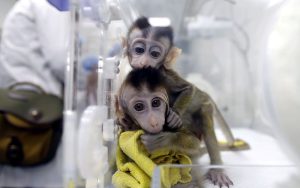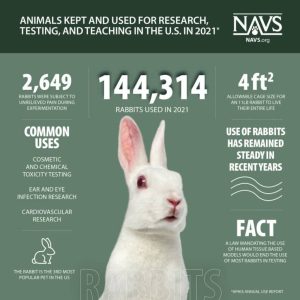
Imagine a world where the cries of innocent creatures go unheard, their suffering hidden behind closed doors. Every year over a million animals suffer due to animal testing. Many laboratories test on animals without any of our knowledge or consideration. Join us on the journey of diving deep into the true horror that animals have to experience. According to Brittancia, “94% of drugs that pass animal tests fail in human clinical trials. Over 100 stroke drugs and 85 HIV vaccines failed in humans after succeeding in animal trials, making animal testing unnecessary in some cases and ineffective in finding cures.” As much as healthcare providers want to believe that animal testing is helpful and successful for humans, it just is not as reliable as they think it is. The AAVS says that, “In most cases, researchers
attempt to minimize the pain and distress experienced by animals in laboratories; but suffering is, nonetheless, inherent to animal-based research and testing. Animals are held in sterile, isolated cages, forced to suffer disease and injury, and typically euthanized at the end of each study.” Even by trying to adapt research to provide less harm to their test subjects, they are still negatively affected. While acknowledging how unnecessary testing animals are, some companies or organizations choose to continue using the tactic for their own good, while refuting the pain and suffering the animals go into. Pfizer, for example, reported in 2004 that it had wasted more than $2 billion over the past decade on drugs that “failed in advanced human testing or, in a few instances, were forced off the market because of liver toxicity problems.” Meaning that after an animal is tested on, the effects will ultimately change their living

styles, leaving them to accept the pain they endure for the rest of their lives.In conclusion, animal testing is extremely cruel and something that should be stopped completely, as all the impact it has is negative. The use of animal testing is to “evaluate the safety of drugs, vaccines, food additives, household products, workplace chemicals, cosmetics, water and air pollutants, and many other substances.” (National Institutes of Health. But there are alternative ways to test like vitro methods (using human cells and tissues), computer models (in silico), and studies with human volunteers to test products and treatments, etc. These ways don’t harm innocent animals and are safe. We should consider these alternatives because animal testing is so painful for animals causing them to suffer and many die. If we all work together we can end animal testing.







